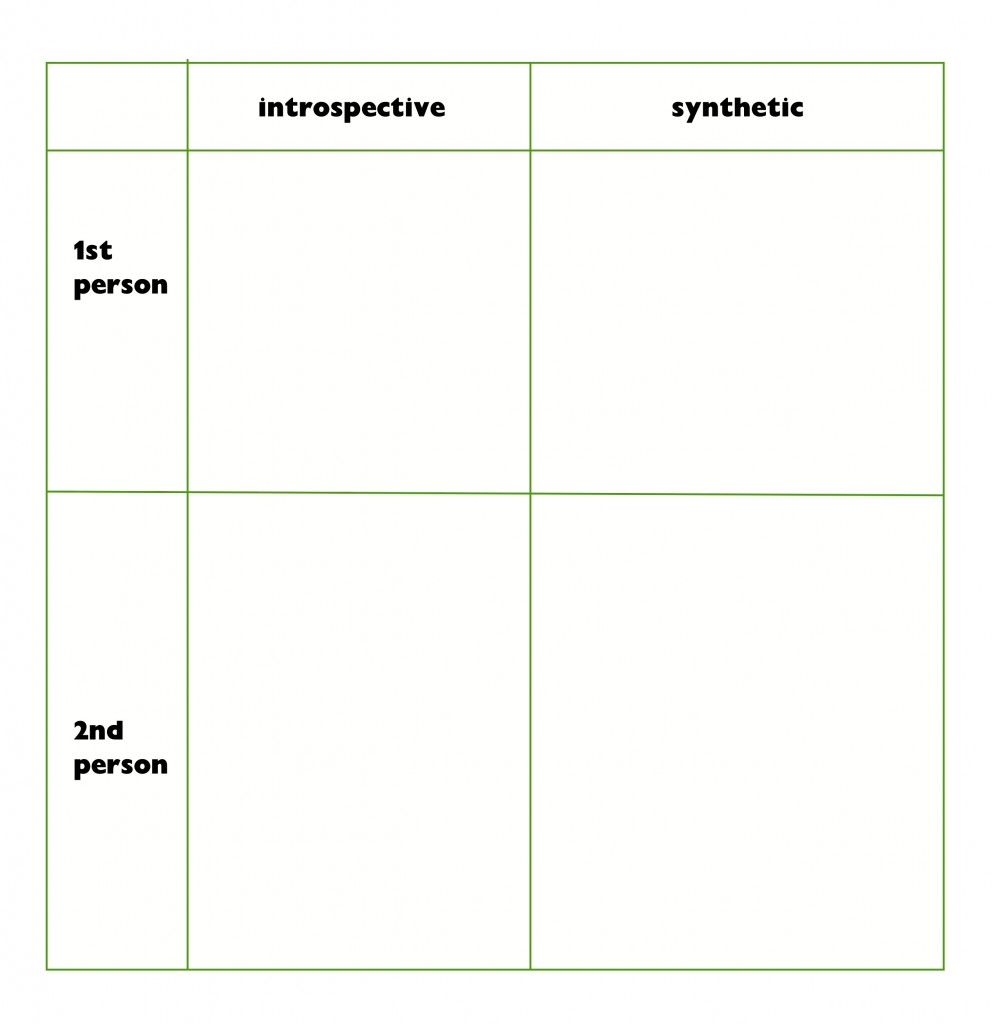I’ve been reviewing current so-called Integral literature over the last few weeks, but it was Ken who had much earlier got me going back toward that development dynamic when I toppled over ‘into it’ in the intellectual sense from our discussing Giegerich’s critique of classical Analytical Psychology.
I’m not an Integralist. Understanding in a meta-systems sense that the best and the lesser are sometimes necessarily retained, and, transcend-and-include turns out to be an arbitrary imposition if it then, at times, results in the baby following promptly the bathwater, highlights the fundamental points of distinction between my messy/rigorous viewing site and the seemingly reductive AQAL territories.
I note as much when I peruse the neatly reductive diagrams that have been recently multiplying; and most strike me initially to be graphical, intellectual kitsch. But then I get out my scraper.
I’d be very interested in scratching beneath the surface of the presumably poetical ” ‘live eros,’ springing forth from chaos.”
What a human system apparently is (to a degree mediated by a, or several, or all domains,) is what he or she entails, and what he or she can possibly entertain, and, so, what I and you feel, and, that which I and you may create from the, my/your, our, current entailment, and, also, how future potentials are foresight worthy. In a nutshell, this is a (my own,) provisional perspective that, at least and as far as I do foresee, is able to encompass just about any ol’ additional perspective which could be tossed toward it, at it, into it, or, even land neatly and dynamically as a tangent, and with enough energy in such a circuit to cause further differentiation and a foundation for adaptation or sudden evolution.
Development is often non-linear.
Horizon is the root of horizontal.
We, you and I, are able to discuss the future. (Maybe this is among the most singular human features.)
The Map never gets close, and that it gets closer is an illusion provided by what I term the sunk perspective. In noting this, at the same time, all sorts of adventurous turns may tumble out of the dynamical interplay caused by being gripped and enthused by the current sunk perspective! Such perspectives then become relativized–and this is may be much different than being transcended and included.
Someday my squaring of radical empiricism and human (or social,) cybernetics will fall down the hole too.
If you should speak and try a hundred ways to express it,
‘Tis useless; the mystery becomes no clearer. …
A horse of wood is useless on dry land,
It is the special conveyance of voyagers by sea.
Silence is this horse of wood,
Silence is the guide and support of men at sea.
This Silence which causes you annoyance
Is uttering cries of love audible to the spiritual. (Rumi)
THE ANTHROPOLOGICAL FALLACY by Wolfgang Giegerich
One conception of the psyche that one can get from studying Jung’s work, above all the work of early Jung, is that the psyche has a clear- cut orderly structure that can be presented in the geometric forms of concentric circles (the ego as the center, surrounded first by the realm of consciousness, then of the personal unconscious and finally of the collective unconscious) or of a cone (with different layers, the deepest of which would be that of the collective unconscious whereas the tip would represent the ego) as well as in the imaginal form of personified figures (ego, persona, shadow, anima/animus, self). To this conception, Jung’s psychological typology with its compass-like representation of the four orientation functions fits very neatly. The crux of this conception is that it starts out from the human person. The human being is here the container or vessel of the soul and accordingly also the horizon of psychology A psychology based on this fantasy clearly operates with the division between man and world, subject and object, inner and outer, psychology and physics and feels competent for only half of this divided whole.
Psychology’s belonging to one side manifests for example in the concept of “extraversion” and in the “object-level” method of dream interpretation. Psychology is here what goes on inside the human person, which is why I speak of the anthropological fallacy. This fallacy is of course by no means a specialty of (the early) C. G. Jung. It is, and has been, the generally accepted, conventional idea about psychology ever since there has been a scientific discipline by this name, an idea that seemed so natural, so self-evident that it was not felt to be in need of any argumentative justification.
In depth psychology the anthropological fallacy had the practical consequence that the individual was urged to turn inwards and, in the case of Jungian analysis, to develop his or her self and to strive for his or her wholeness. Not only the “individuation process,” but Jung’s adamant emphasis on the individual as “the measure of all things” (CW 10, par.523) and “the makeweight that tips the scales” (par. 586) affirmed and highlighted this concentration on the person. It is true, Jung repeatedly insisted that “individuation” and his psychological stance in general does not exclude, but include, the world. But such a semantic statement does not undo the underlying structure or syntax of this thinking, namely that it irrevocably starts out from a human being who has the world (“external reality”) outside and vis-a?-vis himself. Even synchronicity as the meaningful coincidence of an inner and an outer event still has the anthropological conception of psychology as its background and precisely by trying to overcome the opposition of psychology and physics in the direction of the idea of unus mundus once more confirms the anthropological stance.
A serious consequence of this methodological standpoint is that the soul is logically relegated to second rank, as much as it may be prioritized, semantically and emotionally. The human being is here the substrate or actual substance and the psyche is merely one of the attributes of this substrate.
But the human being as the substrate personality is not itself the topic of psychology. It lies outside psychology’s field of vision. Psychology’s topic is the soul, is psychic life (which, however, often manifests in people). The moment psychic life is defined as being the life of the substrate personality, psychology has the task of exploring something (namely, psychic life), whose actual substantial reality (namely, the human being) is pre-supposed as lying outside (“pre-”) its own precincts of competence and responsibility…. The soul, not the person, is what I have to focus on.



